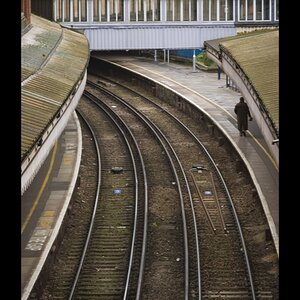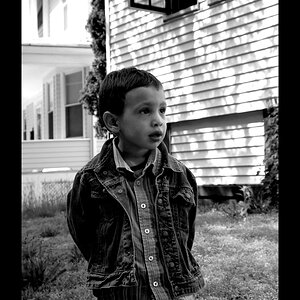vigilante
TPF Noob!
- Joined
- Feb 5, 2015
- Messages
- 55
- Reaction score
- 1
- Can others edit my Photos
- Photos OK to edit
I'm trying to do product photos for tiny objects, like less than an inch square. Plastic stuff, not jewelry etc.
I have two kit lenses, 18mm-70mm and 70mm-200mm. Neither lens lets me get very close in terms of focus, but I can't exactly "fill the frame" with a 3/4" wide object either.
When photographing objects this small, is it pretty much mandatory to have a macro lens? Or am I just as well to zoom to 200mm and stay back as far as I can to focus?
Speaking of focus, it's pretty hard for tiny objects, the auto-focus has trouble, and even if I manually focus, I'm so far back from the object that it's hard to tell if I'm right!
It's not until I get the full size image onto my computer where I can see the focus issues.
I'm shooting with two flashes placed pretty near the objects with 10 inch diffusers over them, fairly low power. I think I'm getting good light but I'm not able to blow out my entire background and view, there just isn't enough light in the whole frame due to my lens and being further away from the product. I'm also getting dual shadows with the two flashes.
I'm trying to rethink this but not sure where to start. Macro lens of some sort? Macro screw-on adapter? Two more flashes? Switch to continuous lighting? Light box?
Here is one sample image that is just cropped and sized but no post processing. Notice the foreground is almost pure 255, but not enough light to blow out any of the background. Also notice the dual shadows going on. How can I improve?
f/16, ISO 100, 1/200, 55mm.

I have two kit lenses, 18mm-70mm and 70mm-200mm. Neither lens lets me get very close in terms of focus, but I can't exactly "fill the frame" with a 3/4" wide object either.
When photographing objects this small, is it pretty much mandatory to have a macro lens? Or am I just as well to zoom to 200mm and stay back as far as I can to focus?
Speaking of focus, it's pretty hard for tiny objects, the auto-focus has trouble, and even if I manually focus, I'm so far back from the object that it's hard to tell if I'm right!
It's not until I get the full size image onto my computer where I can see the focus issues.
I'm shooting with two flashes placed pretty near the objects with 10 inch diffusers over them, fairly low power. I think I'm getting good light but I'm not able to blow out my entire background and view, there just isn't enough light in the whole frame due to my lens and being further away from the product. I'm also getting dual shadows with the two flashes.
I'm trying to rethink this but not sure where to start. Macro lens of some sort? Macro screw-on adapter? Two more flashes? Switch to continuous lighting? Light box?
Here is one sample image that is just cropped and sized but no post processing. Notice the foreground is almost pure 255, but not enough light to blow out any of the background. Also notice the dual shadows going on. How can I improve?
f/16, ISO 100, 1/200, 55mm.




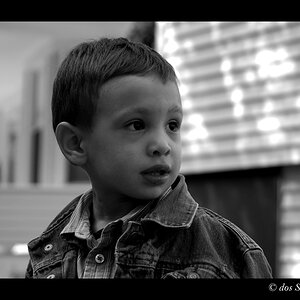
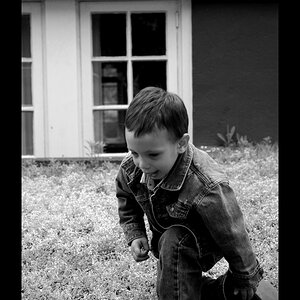
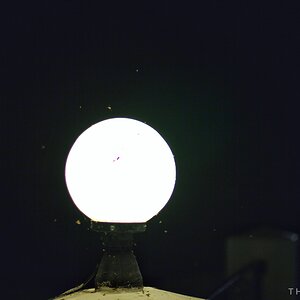
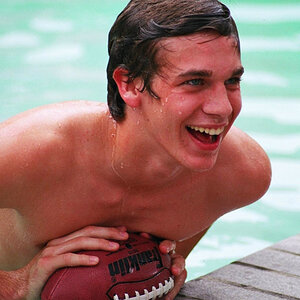
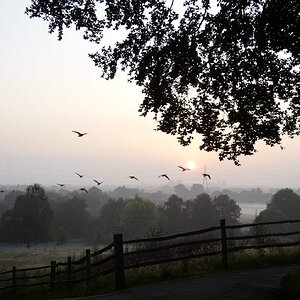
![[No title]](/data/xfmg/thumbnail/42/42230-fa8ace50a80342c7d91db1431f911bab.jpg?1619740048)

![[No title]](/data/xfmg/thumbnail/33/33491-46949ced4f9729f095cb48c6c61633db.jpg?1619736003)
